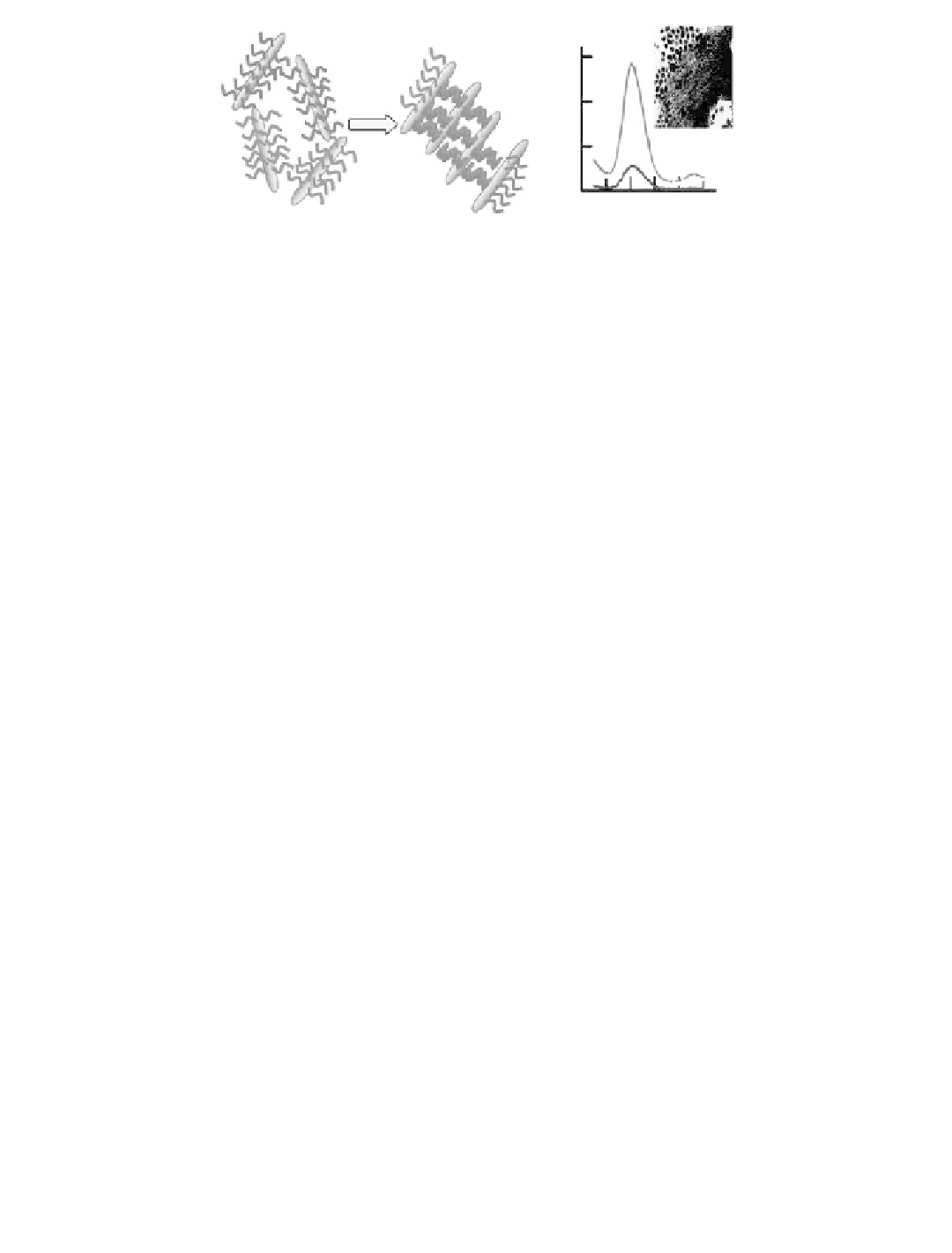Biomedical Engineering Reference
In-Depth Information
(A)
(B)
150
100
50
0
700 720 740 760 780 800
Wavelength (nm)
Hybridization of oligo tagged gold nanorods
FIGURE 12.27
(See color insert)
(A) Schematic illustration of gold nanorod assembly by DNA hybridization. (B) Relative flu-
orescence intensities of fluorescence emission spectra: oligo-functionalized gold nanorods (red line); after mixing
with complementary DNA-functionalized gold nanorods (blue line). The inset is a TEM image of self-assembled
gold nanorods by DNA hybridization. (From Li, C.-Z., Male, K. B., Hrapovic, S., Luong, J. H. T. (2005).
Fluorescence Properties of Gold Nanorods and Their Application for DNA Biosensing.
Chem. Comm
., 31,
3924-3926.)
biosensors including enzyme biosensors, DNA biosensors, and immunosensors have
been summarized.
Although CNTs and NWs can be incorporated with biomolecules to work as a building
unit in biosensors, there is still a great demand for selective coupling techniques and fab-
rication techniques that allow confinement of different biomolecules onto closely spaced
individual NWs or CNTs to create a more powerful sensor array so that multiple analytes
can be real-time monitored in parallel [203,204].
The use of biomolecules (such as protein and DNA) as a self-assembly template is
anticipated to provide the potential to tailor and fabricate NW- or CNT-based devices
with desirable structure and functionalities. Biomolecules linked to nanomaterials may
also be used as binding elements for the specific linkage of materials to substrates in the
form of addressable structures [205,206]. One example reported in
Nature
[207] suggests
that enzymatic procedures combined with modern methods of bioorganic synthesis
will open novel routes for the generation of well-defined biomolecule/nanomaterial
components, which are useful as building blocks for the bottom-up assembly of sophis-
ticated nanostructured architectures. Furthermore, advanced nanofabrication capabili-
ties remain a particular challenge to fabricating a biosensor with individual
addressable and reproducible sensors. The rapid development of photolithographic
techniques will be beneficial for producing high-performance integrated circuits for
years to come [208].
In conclusion, the combination of the unique electronic properties of CNTs and NWs
and the recognition features of biomaterials will undoubtingly motivate fundamental
studies and applications in connection with bioelectronic and biosensor research in inter-
disciplinary research involving chemistry, physics, materials science, electrical engineer-
ing, computer science, biology, and medicine. This might also open the door to catalytic
and light-harvesting devices, molecular switches and transistors, biofuel cells, and other
bio- and optoelectronic devices. CNT- and NW-based biosensors are expected to have a
major impact upon clinical diagnostics, environmental monitoring, security surveillance,
or ensuring our food safety in the future. Although the perspectives of development of
nanomaterial-based biosensors is bright and fascinating, most of the fundamental results
and practical applications are still ahead of us. Many within various research communi-
ties are working hard to make it real.

